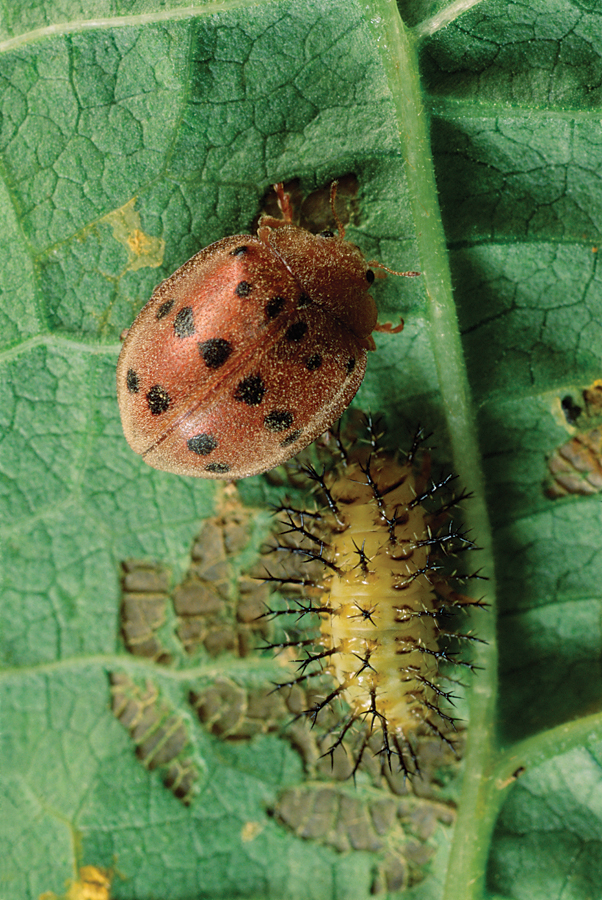Bean beetle, also called Mexican bean beetle, is a serious insect pest that lives on bean plants. It is a kind of ladybug, but its eating habits are different from those of other ladybugs. Most ladybugs eat plant lice and other harmful insects.
Characteristics.
When fully grown, the body of the bean beetle is shaped like one half of a small pea. Its entire back is covered by a pair of hard red or yellowish wings. Each wing has eight dark spots. The larva (young beetle) is also round and plump. However, it has no wings. The larva looks like a cucumber-shaped pincushion.
The adult bean beetles spend the winter under heaps of rubbish or in other sheltered places. In spring, the females begin to lay their yellow eggs on the undersides of leaves. In warm climates, the beetle may have four broods of larvae during one season.
The beetles and larvae eat the leaves of many kinds of beans, including bush and pole beans, lima beans, and kidney beans. Where these beans are scarce, the beetles attack such related plants as cowpeas, soybeans, sweet clover, and alfalfa.

The bean beetle has long been a pest in Mexico and the West. About 1920, it was accidentally introduced into Alabama. Since then, it has spread over the central and eastern states, and into southern Canada.
Control of bean beetles.
The owners of small gardens can protect their beans from damage by hand-picking the beetles off the plants as soon as the pests appear. Farmers use crop rotation, varieties of plants resistant to the beetles, and other methods to reduce damage to crops. Bean beetles may be difficult to kill with insecticides because the dust or spray must reach the undersides of the leaves where the bean beetles cling.
